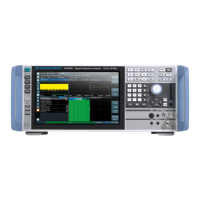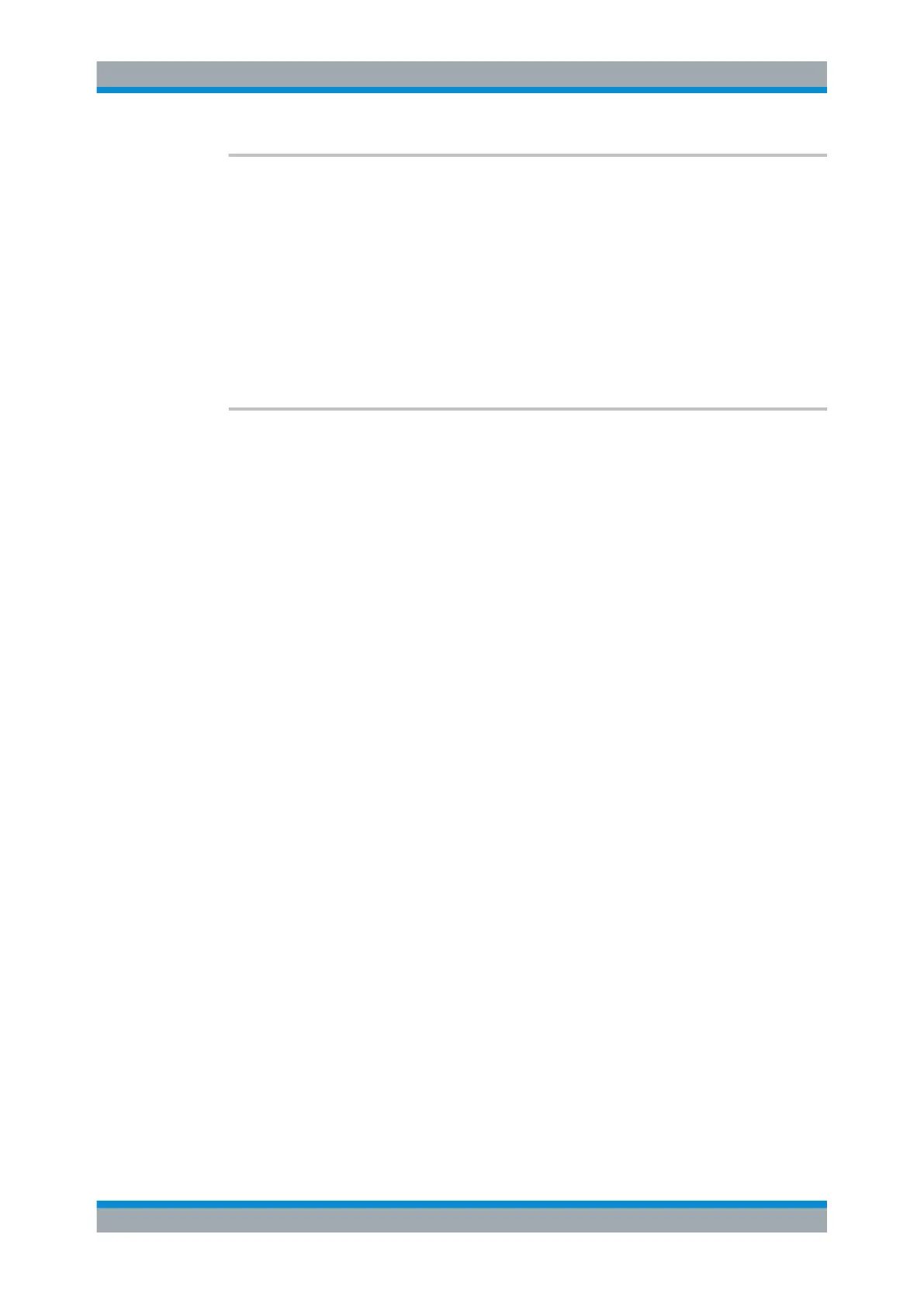Remote Commands
R&S
®
FSVA3000/ R&S
®
FSV3000
979User Manual 1178.8520.02 ─ 01
MMEMory:LOAD<n>:TRACe <Trace>, <FileName>
This command imports trace data from the specified window to an ASCII file.
Suffix:
<n>
.
Window
Parameters:
<Trace> Number of the trace to be stored
(This parameter is ignored for FORMat:DIMPort:TRACes
on page 978ALL).
<FileName> String containing the path and name of the import file.
MMEMory:STORe<n>:TRACe
<Trace>, <FileName>
This command exports trace data from the specified window to an ASCII file.
For details on the file format see Chapter 9.6.6, "Reference: ASCII File Export Format",
on page 525.
Secure User Mode
In secure user mode, settings that are stored on the instrument are stored to volatile
memory, which is restricted to 256 MB. Thus, a "memory limit reached" error can occur
although the hard disk indicates that storage space is still available.
To store data permanently, select an external storage location such as a USB memory
device.
For details, see Chapter 5.1.7, "Protecting Data Using the Secure User Mode",
on page 42.
Suffix:
<n>
.
Window
Parameters:
<Trace> Number of the trace to be stored
(This parameter is ignored if the option "Export all Traces and all
Table Results" is activated in the Export configuration settings,
see FORMat:DEXPort:TRACes on page 978).
<FileName> String containing the path and name of the target file.
Example:
MMEM:STOR1:TRAC 1,'C:\TEST.ASC'
Stores trace 1 from window 1 in the file TEST.ASC.
Manual operation: See " Export Trace to ASCII File " on page 522
14.8.2.7 Programming Example: Configuring a Spectrogram
This example demonstrates how to configure a spectrogram for a basic frequency
sweep in a remote environment. The spectrogram is displayed in addition to the spec-
trum display, in a new window. In addition, the usage of special spectrogram markers is
demonstrated (see Chapter 14.8.3.6, "Marker Search (Spectrograms)",
on page 1001).
Analyzing Measurements (Basics)

